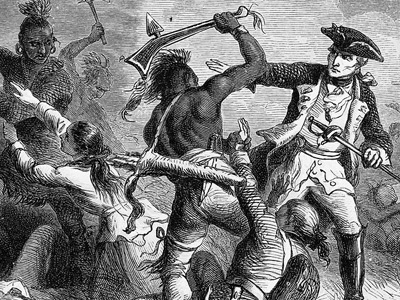French and Indian War (1754–1763)
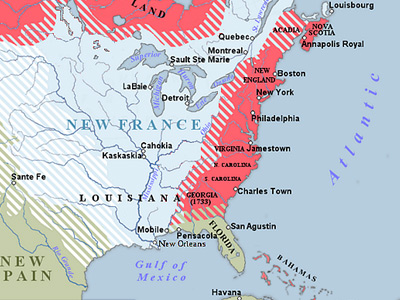
North America in the 1750s
At this time, North America east of the Mississippi River was largely claimed by either Great Britain or France. Large areas had no settlements by Europeans.
The French population numbered about 75,000 and was heavily concentrated along the St. Lawrence River valley, with some also in Acadia (present-day New Brunswick and parts of Nova Scotia, including Île Royale (present-day Cape Breton Island)). Fewer lived in New Orleans, Biloxi, Mississippi, Mobile, Alabama and small settlements in the Illinois Country, hugging the east side of the Mississippi River and its tributaries. French fur traders and trappers traveled throughout the St. Lawrence and Mississippi watersheds, did business with local tribes, and often married Indian women. Traders married daughters of chiefs, creating high-ranking unions.
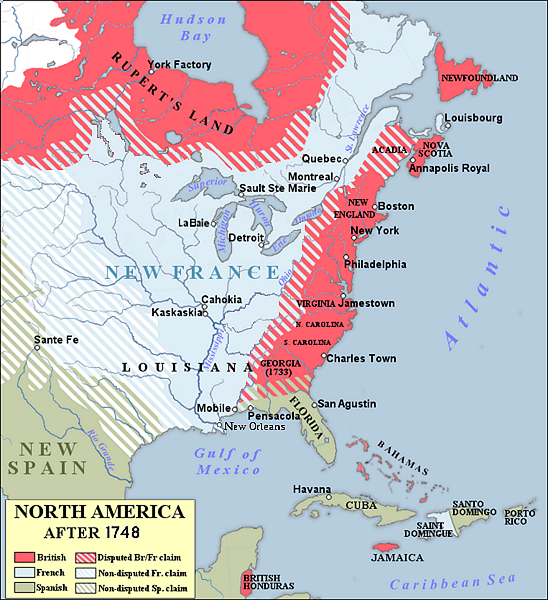
Map showing the 1750 possessions of Britain (pink), France (blue), and Spain (green) in contemporary Canada and the United States
British settlers outnumbered the French 20 to 1 with a population of about 1.5 million ranged along the eastern coast of the continent, from Nova Scotia and Newfoundland in the north, to Georgia in the south. Many of the older colonies had land claims that extended arbitrarily far to the west, as the extent of the continent was unknown at the time their provincial charters were granted. While their population centers were along the coast, the settlements were growing into the interior. Nova Scotia, which had been captured from France The Kingdom of France is the historiographical name or umbrella term given to various political entities of France in the medieval and early modern period. It was one of the most powerful states in Europe since the High Middle Ages. It was also an early colonial power, with possessions around the world. Colonial conflicts with Great Britain led to the loss of much of its North American holdings by 1763. The Kingdom of France adopted a written constitution in 1791, but the Kingdom was abolished a year later and replaced with the First French Republic. in 1713, still had a significant French-speaking population. Britain
The Kingdom of France is the historiographical name or umbrella term given to various political entities of France in the medieval and early modern period. It was one of the most powerful states in Europe since the High Middle Ages. It was also an early colonial power, with possessions around the world. Colonial conflicts with Great Britain led to the loss of much of its North American holdings by 1763. The Kingdom of France adopted a written constitution in 1791, but the Kingdom was abolished a year later and replaced with the First French Republic. in 1713, still had a significant French-speaking population. Britain The Kingdom of Great Britain was a sovereign country in Western Europe from 1 May 1707 to the end of 31 December 1800. The state was created by the 1706 Treaty of Union and ratified by the Acts of Union 1707, which united the kingdoms of England (which included Wales) and Scotland to form a single kingdom encompassing the whole island of Great Britain and its outlying islands, with the exception of the Isle of Man and the Channel Islands. also claimed Rupert's Land, where the Hudson's Bay Company traded for furs with local tribes.
The Kingdom of Great Britain was a sovereign country in Western Europe from 1 May 1707 to the end of 31 December 1800. The state was created by the 1706 Treaty of Union and ratified by the Acts of Union 1707, which united the kingdoms of England (which included Wales) and Scotland to form a single kingdom encompassing the whole island of Great Britain and its outlying islands, with the exception of the Isle of Man and the Channel Islands. also claimed Rupert's Land, where the Hudson's Bay Company traded for furs with local tribes.
In between the French and the British, large areas were dominated by native tribes. To the north, the Mi'kmaq and the Abenaki were engaged in Father Le Loutre's War and still held sway in parts of Nova Scotia, Acadia, and the eastern portions of the province of Canada, as well as much of present-day Maine. The Iroquois Confederation dominated much of present-day Upstate New York and the Ohio Country, although the latter also included Algonquian-speaking populations of Delaware and Shawnee, as well as Iroquoian-speaking Mingo. These tribes were formally under Iroquois rule, and were limited by them in authority to make agreements.
Further south the Southeast interior was dominated by Siouan-speaking Catawba, Muskogee-speaking Creek and Choctaw, and the Iroquoian-speaking Cherokee tribes. When war broke out, the French used their trading connections to recruit fighters from tribes in western portions of the Great Lakes region (an area not directly subject to the conflict between the French and British), including the Huron, Mississauga, Ojibwa, Winnebago, and Potawatomi. The British were supported in the war by the Iroquois Six Nations, and also by the Cherokee – until differences sparked the Anglo-Cherokee War in 1758. In 1758 the Pennsylvania government successfully negotiated the Treaty of Easton, in which a number of tribes in the Ohio Country promised neutrality in exchange for land concessions and other considerations. Most of the other northern tribes sided with the French, their primary trading partner and supplier of arms. The Creek and Cherokee were subject to diplomatic efforts by both the French and British to gain either their support or neutrality in the conflict. It was not uncommon for small bands to participate on the "other side" of the conflict from formally negotiated agreements, as most tribes were decentralized and bands made their own decisions about warfare.
By this time, in eastern North America Spain claimed only the province of Florida; it controlled Cuba and other territories in the West Indies that became military objectives in the Seven Years' War. Florida's European population was a few hundred, concentrated in St. Augustine and Pensacola.
At the start of the war, no French regular army troops were stationed in North America, and few British troops. New France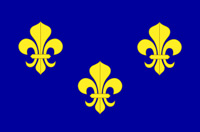 New France was the territory colonized by France in North America, beginning with the exploration of the Gulf of Saint Lawrence by Jacques Cartier in 1534 and ending with the cession of New France to Great Britain and Spain in 1763 under the Treaty of Paris. In the 16th century, the lands were used primarily to draw from the wealth of natural resources such as furs through trade with the various indigenous peoples. In the seventeenth century, successful settlements began in Acadia and in Quebec. was defended by about 3,000 troupes de la marine, companies of colonial regulars (some of whom had significant woodland combat experience). The colonial government recruited militia support when needed. Most British colonies mustered local militia companies, generally ill trained and available only for short periods, to deal with native threats, but did not have any standing forces.
New France was the territory colonized by France in North America, beginning with the exploration of the Gulf of Saint Lawrence by Jacques Cartier in 1534 and ending with the cession of New France to Great Britain and Spain in 1763 under the Treaty of Paris. In the 16th century, the lands were used primarily to draw from the wealth of natural resources such as furs through trade with the various indigenous peoples. In the seventeenth century, successful settlements began in Acadia and in Quebec. was defended by about 3,000 troupes de la marine, companies of colonial regulars (some of whom had significant woodland combat experience). The colonial government recruited militia support when needed. Most British colonies mustered local militia companies, generally ill trained and available only for short periods, to deal with native threats, but did not have any standing forces.
Because of its large frontier, Virginia had several companies of British regulars. The colonial governments were used to operating independently of each other and of the government in London, a situation that complicated negotiations with Native tribes. Their territories often encompassed land claimed by multiple colonies. After the war began, the leaders of the British Army establishment tried to impose constraints and demands on the colonial administrations.
HISTORY
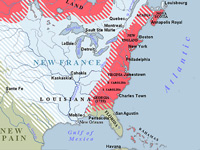
RESOURCES
This article uses material from the Wikipedia article "French and Indian War", which is released under the Creative Commons Attribution-Share-Alike License 3.0.
© Stories Preschool. All Rights Reserved.
